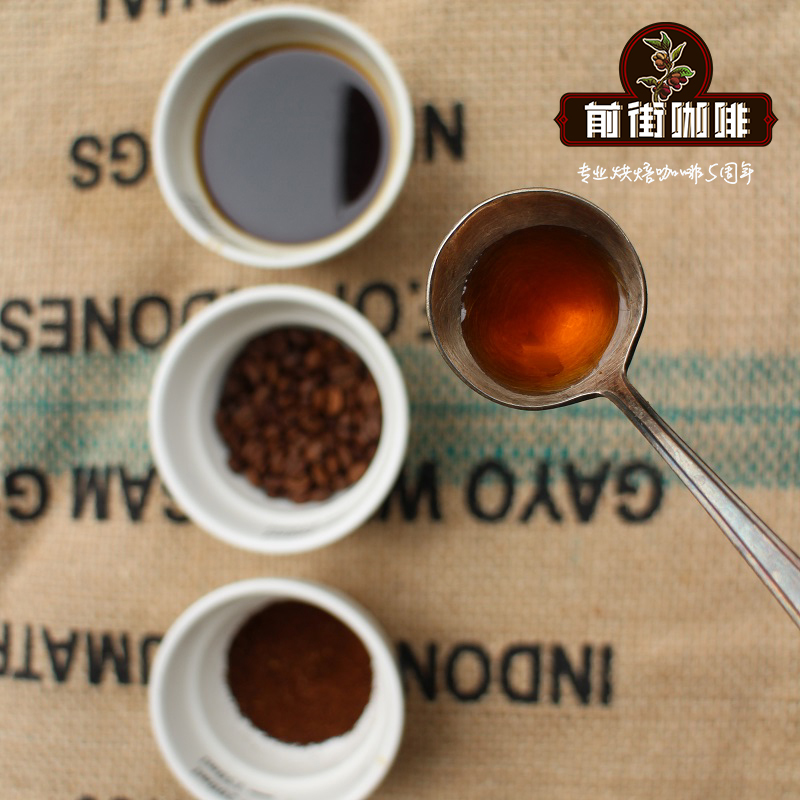Introduction to the information story of Peruvian coffee producing area, the largest exporter of organic and fair trade coffee in the world.

Professional coffee knowledge exchange More coffee bean information Please pay attention to coffee workshop (Weixin Official Accounts cafe_style)
Seventy per cent of Peruvian coffee is produced north of the border, mainly Arabica and mostly organic; coffee exports account for a significant proportion of Peru's agricultural production. Bourbon, Typica and Caturra are the major coffee varieties grown in Peru. More than one third of Peru's population depends on agriculture for its livelihood, and most of them are small farmers operating independently. Small farmers 'groups are particularly important because of the size of the territory, the large land gaps, the distance between cities and the high cost of transportation.
Since 2005, Fairtrade Labelling International has been assisting Peruvian farmers to access Fairtrade systems, and Peru is now one of the world's largest exporters of organic and Fairtrade coffee.
Fair trade covers many industries and appeals to the entire industrial chain. From the producers at the source, the traders and distributors who handle the goods in the middle, to the consumers at the end, the actions of each link must conform to the principle of fairness and justice. Therefore, it is not easy to obtain fair trade certification. For example, farmers should have reasonable incomes, farmers should be environmentally friendly, traders should let farmers have reasonable incomes, and they can help improve their lives. There are many specifications that need to be met to be certified. With a better quality of life, farmers will pay more attention to the sustainability of the environment and industry.
In the past, farmers in equatorial South America who wanted to expand their acreage to increase their income always cut down rainforests without thinking, causing 750,000 square kilometers of Amazon rainforest to disappear under artificial development since the 1970s. In order to perpetuate forests, current cultivation has not cut down the original forest, but instead put coffee trees in shade; more than half of the coffee in Peru has been implemented in shade cultivation, which not only perpetuates the rain forest, but also improves the quality of coffee.
Starting from Europe and the United States, the concept of environmental awareness, social justice and personal health in the consumer market has been popularized. At present, the demand for organic markets in the world is huge. Peruvian small farmers who seriously manage various organic agricultural products have a wider sky. The Peruvian Government understands that organic agriculture is beneficial to others and self-interests. In addition to encouraging small farmers to organize into associations or cooperatives, it has also planned related supporting measures. Peru is now the fifth largest exporter of organic agriculture.
Cajamarca is a coffee-producing area in northern Peru covering the northern end of the Andes Mountains. Due to the equator passing through and suitable soil, the coffee quality in this area is quite good.
Most coffee and cocoa growers in Peru are small farmers with only one to three hectares of land, many of whom live in remote mountainous areas that take a lot of time to get around. Coffee farmers in Kahakama usually have better technical and organizational support.
Important Notice :
前街咖啡 FrontStreet Coffee has moved to new addredd:
FrontStreet Coffee Address: 315,Donghua East Road,GuangZhou
Tel:020 38364473
- Prev

Peru Organic Certified Coffee-Cajamarca Sol Y Cafe Sun and Coffee Cooperative Information
Professional coffee knowledge exchange more coffee bean information please follow the coffee workshop (Wechat official account cafe_style) Peruvian Coffee-Sun and Coffee Cooperative. Peru Cajamarca Sol Y Caf □ Peru has more than 11 million people engaged in agriculture-related work, the vast majority of whom are small farmers who operate their own businesses. Due to the long distance between cities and high transportation costs, small farmers
- Next

Villarica Manor, Villa Rica, Oxapampa, Oxapampa, Peru, Pasco, Peru.
Professional coffee knowledge exchange more coffee bean information please follow the coffee workshop (Wechat official account cafe_style) about Peruvian coffee, there are countless interesting stories, the ancient and mysterious Indian legends, the Sky City (Machu Pichu), the mysterious Nazca Land painting (Nazca), the Andes Peak breaking the horizon, and the largest freshwater lake in South America.
Related
- Does Rose Summer choose Blue, Green or Red? Detailed explanation of Rose Summer Coffee plots and Classification in Panamanian Jade Manor
- What is the difference between the origin, producing area, processing plant, cooperative and manor of coffee beans?
- How fine does the espresso powder fit? how to grind the espresso?
- Sca coffee roasting degree color card coffee roasting degree 8 roasting color values what do you mean?
- The practice of lattes: how to make lattes at home
- Introduction to Indonesian Fine Coffee beans-- Java Coffee producing area of Indonesian Arabica Coffee
- How much will the flavor of light and medium roasted rose summer be expressed? What baking level is rose summer suitable for?
- Introduction to the characteristics of washing, sun-drying or wet-planing coffee commonly used in Mantenin, Indonesia
- Price characteristics of Arabica Coffee Bean Starbucks introduction to Manning Coffee Bean Taste producing area Variety Manor
- What is the authentic Yega flavor? What are the flavor characteristics of the really excellent Yejasuffi coffee beans?

